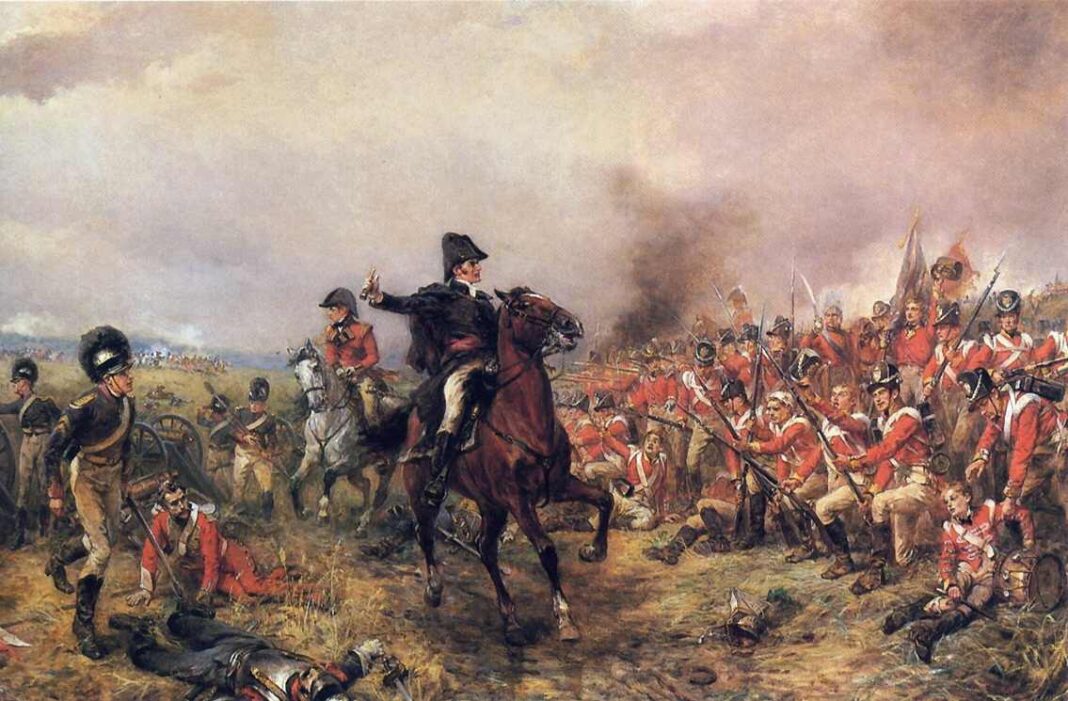A Scottish archaeologist has proposed his hypothesis to explain the extremely small number of human remains on the battlefield of Waterloo.
Duke of Wellington at the Battle of Waterloo. Painting by Robert Alexander Hillingford, second half of the 19th century / ©wikipedia.org
Two hundred and seven years ago, on June 18, 1815, Napoleon’s last battle took place – the Battle of Waterloo, in which the French troops were defeated by a coalition of allies under the command of Wellington and Blucher. The course of hostilities is thoroughly analyzed in numerous sources, it makes no sense to repeat it in detail. But the analysis of the results of the battle is still a difficult question.
Disputes over the number of casualties in a particular battle are always going on, and the Battle of Waterloo is no exception. But most scientists agree that Napoleon lost about 24-26 thousand killed and wounded, and Wellington and Blucher – about 23-24 thousand. In addition, about 15 thousand Frenchmen were missing (most likely, most simply fled to France) and about five thousand coalition soldiers.
But no matter how detailed historians analyze the course of the battle, no matter how reliable sources contemporary to the event are, there is almost always a question, the answer to which must be sought for centuries. In the case of the Battle of Waterloo, this is the absence of military graves around the battlefield.
The tradition of carrying the bodies of the fallen back to their homeland had not yet been established: as a rule, only those who distinguished themselves in battle or those who had wealthy relatives were awarded such an honor. In any case: who would take care of transporting the bodies of the soldiers of the losing army? That is, the French who died and died from wounds were to be buried not far from the battlefields.
Director of the Scottish Center for the Study of War and Conflict Archeology at the University of Glasgow (UK) Tony Pollard (Tony Pollard) studied private letters, memoirs, and sketches of people who visited the vicinity of the Belgian village of Waterloo shortly after the battle. The results are presented in a paper published in the Journal of Conflict Archeology.
It is well known that Waterloo attracted its first visitors almost as soon as the smoke from the cannons cleared. They were both marauders and ordinary onlookers. Both those and others hoped to grab something on the battlefield as a keepsake – by that time in Europe there was even a resale of such “souvenirs”.
The Scottish merchant James Ker lived then in Brussels and was among the first at the battlefield. He left memoirs in which he described both the people who died in his arms and the places of burial. These memoirs speak of three mass graves, which together can contain up to 13,000 bodies.
Pollard, relying on the testimony of local residents (from private letters from the first visitors to Waterloo), compiled a map on which he noted not three, but many more places where the dead were buried. Apparently, in the first days and months (Walter Scott, for example, visited Waterloo two months later), it was the locals who served as guides for visitors. They showed not only the places of the most intense fighting, but also the graves.
But here’s the problem: archaeological research conducted by Waterloo Uncovered, including geophysical surveys and excavations, has not yet revealed any burial sites.
In 2015, during the construction of a new museum and car park near Waterloo, a human skeleton was discovered. Then in 2019, while excavating the main Allied field hospital, archaeologists from Waterloo Uncovered found amputated human leg bones. The museum at Waterloo also houses a skeleton of uncertain provenance. And that is all. Where are the rest of the bones?
“The bodies of the dead were apparently disposed of in numerous places across the battlefield,” writes Pollard. Who and how disposed of the remains of the fallen?
“At least three newspaper articles dating back to the 1820s mention the importation of human bones from European battlefields to make fertilizer. These battlefields could serve as a convenient source of bones, which were then ground into bone meal, an effective form of fertilizer. One of the main markets for this raw material was the British Isles,” the paper says.
Pollard suggests that some of the early visitors may have been agents of the bone supplier. Their main purpose would be mass graves, since the more bones they contain, the easier it is to pay off the effort of excavation. In addition, Waterloo is one of the closest major battles of the Napoleonic era to Britain, and transport costs in this case would be minimal. It is possible that local residents indicated the places of mass graves to agents.
The burial of the dead at the Château Hougoumont after the Battle of Waterloo. The author of the picture, James Rouse, wrote either from nature or from eyewitness accounts. The painting was shown to the public for the first time in 1817. There were obviously burials. But disappeared / © Tony Pollard
This is a bold hypothesis, but it requires confirmation. Tony Pollard and Waterloo Uncovered are planning a comprehensive archaeological survey of the Waterloo battlefields. If human remains have been removed on the proposed scale, then at least in some cases there must be archaeological evidence of the pits from which they were recovered, however truncated and ill-defined they may be.
Photo: The Duke of Wellington at the Battle of Waterloo. Painting by Robert Alexander Hillingford, second half of the 19th century / ©wikipedia.org









